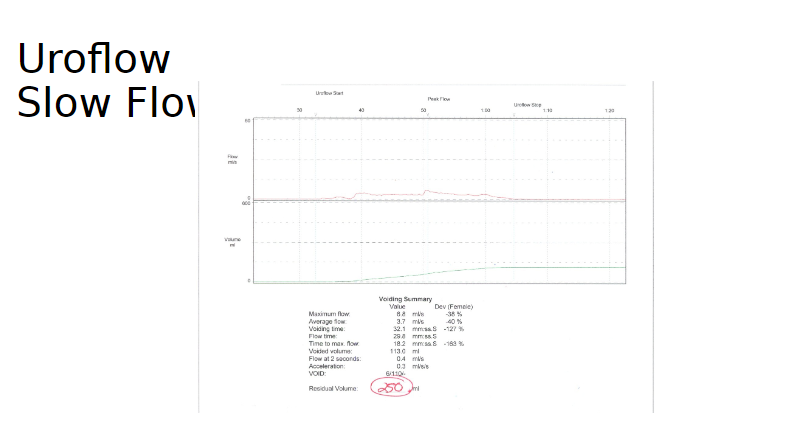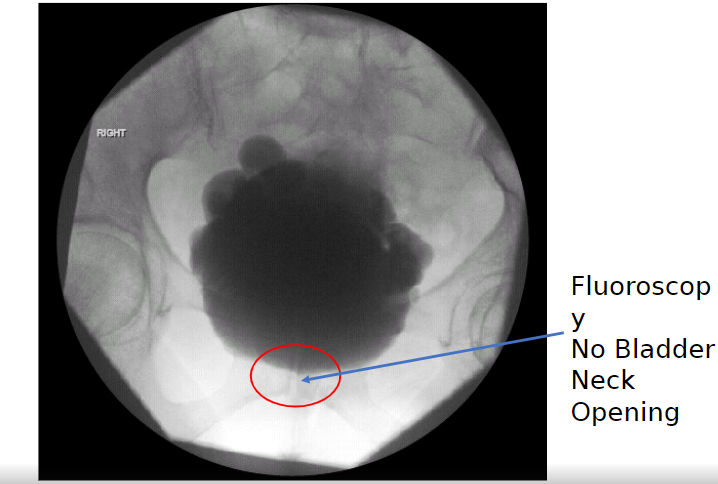




Primary bladder neck obstruction is not an uncommon cause of difficulty voiding/incomplete emptying/slow urinary stream in both women and men. In normal bladder function during the filling phase, the detrusor muscle is relaxed, and the internal (autonomic) sphincter/bladder neck is contracted. At the initiation of voiding, the bladder neck relaxes, the detrusor contracts and normal flow ensues. If the bladder neck does not relax and stays partially or completely contracted, the detrusor pressure must increase to cause flow. Often, the detrusor cannot completely overcome this obstruction, and the urinary stream is slow. The urodynamic findings include high pressure, low flow during voiding, normal EMG activity, and incomplete or no opening of the bladder neck on fluoroscopy. This is demonstrated in the UDS tracing and fluoro image. Treatment for PBNO is either alpha blockers or transurethral incision of the bladder neck.


